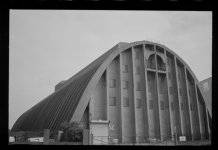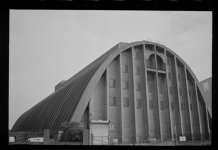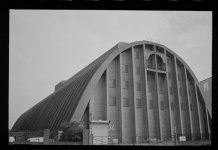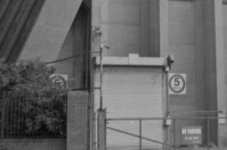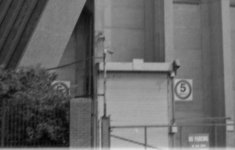marek_
Established
Hi,
Got myself a HP G4010 scanner and for the past two days been trying to get a decent scan out of it - it's not having it.
I've tried scanning b&w, slide, colour negative, and all results are out of focus. I have a cheap all-in-one HP scanner/printer and the results from that, with a bodged light box are far better - they're in focus and detailed. I've attached some results. I Basically want to know whether this is the best scan I can expect? Is this the general quality of flatbeds? Or is this HP model just not very good?
The attached picture was scanned as a transparency with all the auto stuff off - just medium sharpening otherwise they're even worse. The negative was placed directly onto the glass as this improves focuse. Output is grayscale, jpeg.
1, inverted and some brightness/contrast in Photoshop.
2, inverted, b/c, sharpened.
3, inverted, b/c, sharpened again after resizing.
The two on the next post are scans with no sharpening, just some brightness/contrast adjustment:
1, film on glass at 100%
2, film in holder at 100%
As you can see the scans using the holder are bad, but the problem with placing the film directly onto the glass is that newton rings appear.
Any ideas and tips to get the scans focused better? Can this scanner be worse than a £40 all-in-one?
Thanks,
Mark
Got myself a HP G4010 scanner and for the past two days been trying to get a decent scan out of it - it's not having it.
I've tried scanning b&w, slide, colour negative, and all results are out of focus. I have a cheap all-in-one HP scanner/printer and the results from that, with a bodged light box are far better - they're in focus and detailed. I've attached some results. I Basically want to know whether this is the best scan I can expect? Is this the general quality of flatbeds? Or is this HP model just not very good?
The attached picture was scanned as a transparency with all the auto stuff off - just medium sharpening otherwise they're even worse. The negative was placed directly onto the glass as this improves focuse. Output is grayscale, jpeg.
1, inverted and some brightness/contrast in Photoshop.
2, inverted, b/c, sharpened.
3, inverted, b/c, sharpened again after resizing.
The two on the next post are scans with no sharpening, just some brightness/contrast adjustment:
1, film on glass at 100%
2, film in holder at 100%
As you can see the scans using the holder are bad, but the problem with placing the film directly onto the glass is that newton rings appear.
Any ideas and tips to get the scans focused better? Can this scanner be worse than a £40 all-in-one?
Thanks,
Mark


